This Sunday, February 12, is Darwin Day—an occasion to recognize the scientific contributions of 19th-century naturalist Charles Darwin. In this video (originally posted on Darwin Day 2016), our own evolutionary geneticist, Dan Janes, answers questions about Darwin and the role of evolution in health and biomedicine.
Posts by Carolyn Beans
Demystifying General Anesthetics
When Margaret Sedensky, now of Seattle Children’s Research Institute, started as an anesthesiology resident, she wasn’t entirely clear on how anesthetics worked. “I didn’t know, but I figured someone did,” she says. “I asked the senior resident. I asked the attending. I asked the chair. Nobody knew.”
For many years, doctors called general anesthetics a “modern mystery.” Even though they safely administered anesthetics to millions of Americans, they didn’t know exactly how the drugs produced the different states of general anesthesia. These states include unconsciousness, immobility, analgesia (lack of pain) and amnesia (lack of memory).
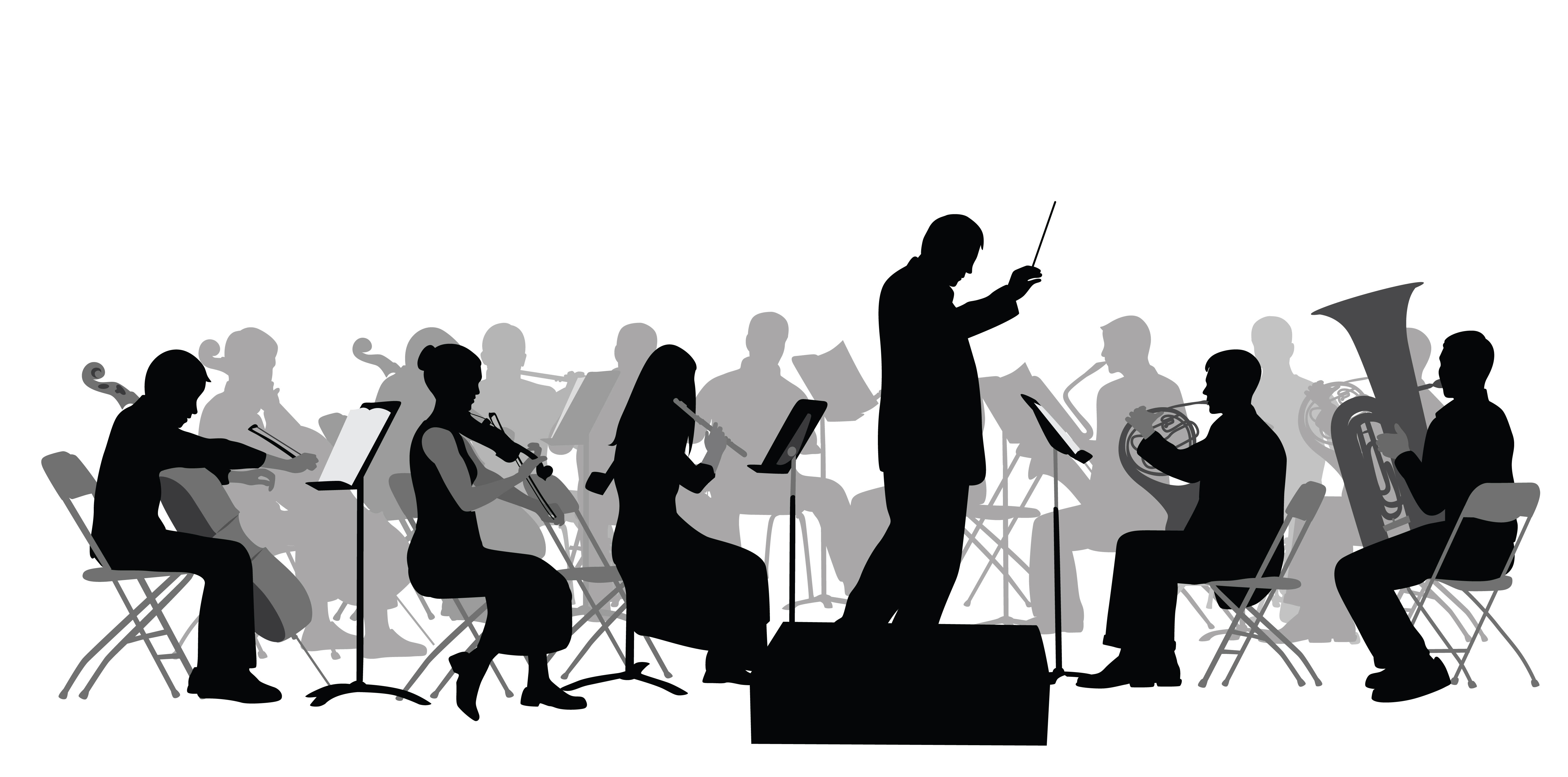
Understanding anesthetics has been challenging for a number of reasons. Unlike many drugs that act on a limited number of proteins in the body, anesthetics interact with seemingly countless proteins and other molecules. Additionally, some anesthesiologists believe that anesthetics may work through a number of different molecular pathways. This means no single molecular target may be required for an anesthetic to work, or no single molecular target can do the job without the help of others.
“It’s like a symphony,” says Roderic Eckenhoff of the University of Pennsylvania Perelman School of Medicine, who has studied anesthesia for decades. “Each molecular target is an instrument, and you need all of them to produce Beethoven’s 5th.” Continue reading “Demystifying General Anesthetics”
Ticks, Mice and Microbes—Studying Disease Spread
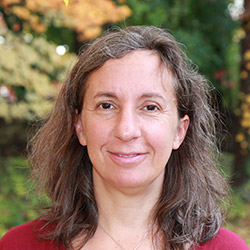
Credit: Oscar Gonzalez (Diuk-Wasser’s husband)
Hometown: Buenos Aires, Argentina
Childhood dream job: Veterinarian
Hobbies: Hiking and gardening with her son (age 10) and daughter (age 7)
Favorite music: Salsa
Worksite: Lab at Columbia University and forests in coastal New England
Maria Diuk-Wasser grew up on the 10th floor of an apartment building in the middle of a bustling city. With no forests or meadows nearby, she read book after book about the natural world and surrounded herself with houseplants.
“I yearned for nature,” Diuk-Wasser says. “But my parents couldn’t provide it. They’re city people. They didn’t know anything about hiking or camping.”
These days, Diuk-Wasser still spends a lot of time in a city—she’s a professor at Columbia University in New York, the most populous city in the U.S.—but she also gets plenty of time in the woods. She hikes for hours through coastal New England forests, some of the loveliest in the country, searching for what many consider less-than-lovely inhabitants: mice and ticks. Continue reading “Ticks, Mice and Microbes—Studying Disease Spread”
New Views on What the Cell’s Parts Can Do
Studying some of the most well-tread territory in science can turn up surprising new findings. Take, for example, the cell. You may have read in textbooks how the cell’s parts look and function during important biological processes like cellular movement and division. You may have even built models of the cell out of gelatin or clay. But scientists continue to learn new facts that require those textbooks to be updated, and those models to be reshaped. Here are a few examples.
Nuclear Envelope: More Than a Protective Barrier
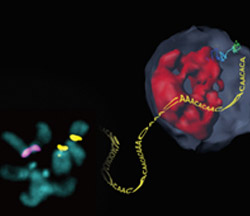
Like a security guard checking IDs at the door, the nuclear envelope forms a protective barrier around the cell’s nucleus, only letting specific proteins and chemical signals pass through. Scientists recently found that this envelope may also act as a repair center for broken strands of heterochromatin, a tightly packed form of DNA.
Irene Chiolo of the University of Southern California and Gary Karpen of the University of California, Berkeley, and the Lawrence Berkeley National Laboratory were part of a team that learned that healthy fruit fly cells mend breaks in heterochromatin by moving the damaged DNA strands to the inner wall of the nuclear envelope. There, proteins embedded in the envelope make the necessary repairs in a safe place where the broken DNA can’t accidentally get fused to the wrong chromosome. Continue reading “New Views on What the Cell’s Parts Can Do”
Four Ways Inheritance Is More Complex Than Mendel Knew
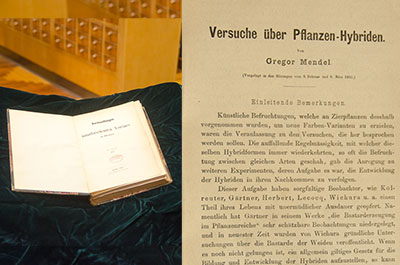
This year marks the 150th anniversary of Gregor Mendel’s publication that—after sitting ignored for a few decades—helped launch the field of modern genetics. Mendel didn’t know about DNA. But after painstakingly cross-fertilizing tens of thousands of pea plants over the course of 8 years, this Austrian monk came very close to describing genes.
By picking a species with a handful of visible characteristics that occur in two easily identifiable forms, Mendel was able to pinpoint what he called “factors.” These factors determine traits like a pea’s shape or color, for instance, and are passed down from parents to offspring. He also observed that factors can be dominant or recessive.
Today, we know that inheritance is far more complex than what Mendel saw in his pea plants. Here are some of the things scientists have learned about how traits are passed from one generation to the next. Continue reading “Four Ways Inheritance Is More Complex Than Mendel Knew”
Evolution and Health: A Conversation with Evolutionary Geneticist Dr. Dan Janes on the Occasion of Charles Darwin’s Birthday
Today, February 12, is Darwin Day—an occasion to recognize the scientific contributions of 19th-century naturalist Charles Darwin. In this video, our own evolutionary geneticist, Dan Janes, answers questions about Darwin and the role of evolution in health and biomedicine.
For more details about evolution and you, check out our articles Evolution and Health and Everyday Evolution.
Cryo-Electron Microscopy Reveals Molecules in Ever Greater Detail
The molecular visualization technique known as cryo-electron microscopy (cryo-EM) was recently named the “2015 Method of the Year” by the journal Nature Methods. In a recent blog post, NIH Director Francis Collins explains how the technology works and just how rapidly it has advanced. He writes, “Today’s cryo-EM is so powerful that researchers can almost make out individual atoms!” He also notes, “These dramatic advances serve as a reminder of the ways in which basic technological innovation can open new realms of scientific possibility.”
We fund many scientists who are developing and applying cryo-EM to bring the details of biological structures into unprecedented focus. Here are two examples of their work and its potential impact. Continue reading “Cryo-Electron Microscopy Reveals Molecules in Ever Greater Detail”
Meet a Globe-Trotting Chemist and Builder of “Smart Molecules”
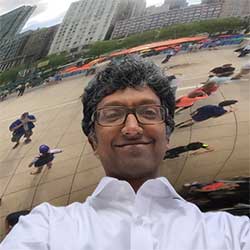
Jayawickramarajah taking a “selfie” with “The Bean,”
a large, highly reflective sculpture in Chicago
Credit: Janarthanan Jayawickramarajah
Born in: Kandy, Sri Lanka
Job site: Tulane University, New Orleans, Louisiana
Alternate career choice: Anthropologist
Favorite sports teams: Sri Lanka national cricket team, University of North Carolina at Chapel Hill Tar Heels basketball, New Orleans Saints football
Favorite weekend activity: Strolling through parks with his wife and two kids and stopping for coffee and beignets (a New Orleans treat, a lot like a doughnut covered in powdered sugar)
In a way, Janarthanan Jayawickramarajah is like an architect. But rather than sketching plans for homes or buildings, he creates molecules designed to detect and destroy cancer cells. Continue reading “Meet a Globe-Trotting Chemist and Builder of “Smart Molecules””
Sugar Rush in Research

Simple sugars such as sucrose (found in the sugar bowl) and fructose (in fruits and honey) provide the sweet finishing touches on many holiday treats. But did you know that versions of these molecules also serve important functions in our cells?
Cells assemble sugar molecules into chains known as glycans. These glycans, which can be linear or branching, play an astounding number of biological roles. When bound to proteins called lectins, they enable a fertilized egg to attach properly onto a woman’s uterine wall and help immune cells move out of a blood vessel to the site of an infection. When decorated with specific patterns of molecules called sulfates, glycans can help direct the growth of nerves. And it’s the glycans found on our blood cells that define blood type (A, B, AB or O). Continue reading “Sugar Rush in Research”
Cracking a Ubiquitous Code
We asked the heads of our scientific divisions to tell us about some of the big questions in fundamental biomedical science that researchers are investigating with NIGMS support. This article is the third in an occasional series that explores these questions and explains how pursuing the answers could advance understanding of important biological processes.
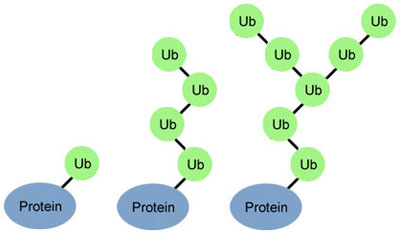
Researchers are on a quest to crack a code made by ubiquitin, a small protein that plays a big role in coordinating cellular function. By attaching to other proteins, ubiquitin determines what those proteins should do next.
Just as zip codes direct letters to specific towns, the ubiquitin code might direct one protein to help with DNA repair, another to assist in cell division, and a third to transport molecules into and out of cells.
Continue reading “Cracking a Ubiquitous Code”
